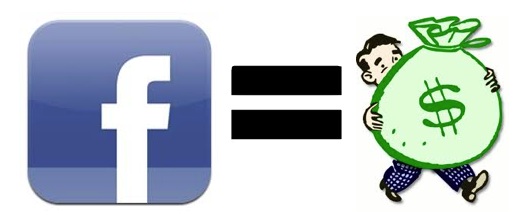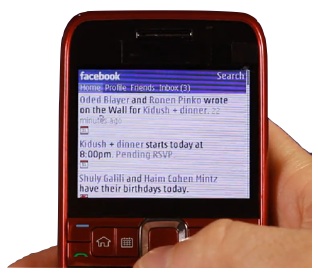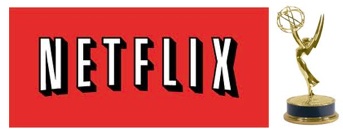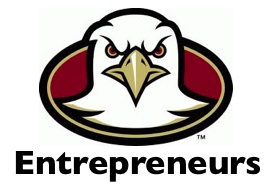
Amazon Chapter Draft, Google as Cop, Facebook Mobile + Platform, Noteworthy Netflix, and Eagle Entrepreneurs – The Week in Geek™ – July 30, 2013
Amazon Chapter (Preview, Unedited Draft)
![]() For those using my textbook, a new version should be available late August. Contact Flat World Knowledge for details. Back in May I posted a draft of a new Amazon Chapter that will be included in next revision. Apologies for the unedited format, but I am sharing the draft in case faculty find it useful in planning for the coming academic year. Several other updates (including an introduction to Disruptive Innovation in the Moore’s Law/Fast Cheap Technology chapter) will also make the next revision.
For those using my textbook, a new version should be available late August. Contact Flat World Knowledge for details. Back in May I posted a draft of a new Amazon Chapter that will be included in next revision. Apologies for the unedited format, but I am sharing the draft in case faculty find it useful in planning for the coming academic year. Several other updates (including an introduction to Disruptive Innovation in the Moore’s Law/Fast Cheap Technology chapter) will also make the next revision.
How Google Code Accidentally Uncovered a Ring of Chinese Car Thieves
 Google’s algorithms relentlessly look for illegitimate activity in the firm’s ad products. Scammers regularly load the service with ads connected with everything from counterfeit luxury goods to common phishing schemes, but Google’s always on the lookout for perps and is getting even better at spotting scams. Last year Google banned some 224 million ads from its network.
Google’s algorithms relentlessly look for illegitimate activity in the firm’s ad products. Scammers regularly load the service with ads connected with everything from counterfeit luxury goods to common phishing schemes, but Google’s always on the lookout for perps and is getting even better at spotting scams. Last year Google banned some 224 million ads from its network.
When we say Google’s on the lookout, it’s really Google’s algorithms. Machine learning constantly weighs a variety of parameters to look for suspicious behavior. The algorithms are so thorough that it’s often tough for a human to say what collection of hundreds of weighted parameters trigger a red flag, but the tools get smarter the more data that Google watches and the more nefarious activity the code uncovers. After detecting unusual activity in China (a pattern of quick auto ad buys from new accounts, in addition to a broader array of more subtle patterns), the system uncovered an offline scam. It turns out criminals in China were photographing cars and advertising them online. Once someone agreed to buy a vehicle, the crooks stole the car, collected the cash from the buyer, then took off, leaving their customer with the unknowingly “hot” wheels. Marketplace Radio has an online audio interview with the author of the piece in The Verge, linked above. A fun example for anyone covering the fraud section of the Google chapter in my textbook.
Facebook is Erasing Doubts on Mobile
 So much for all of those concerns folks had about Facebook’s mobile ad prospects. “Mobile advertising on Facebook has grown from virtually nothing a year ago to 41% of its total ad revenue of $1.6 billion in the second quarter.” Says Zuckerberg “Soon we’ll have more revenue on mobile than desktop.” Overall revenues during the prior quarter were up 53% to $1.81 billion, with profits clocking in at a cool third-of-a-billion-dollars.
So much for all of those concerns folks had about Facebook’s mobile ad prospects. “Mobile advertising on Facebook has grown from virtually nothing a year ago to 41% of its total ad revenue of $1.6 billion in the second quarter.” Says Zuckerberg “Soon we’ll have more revenue on mobile than desktop.” Overall revenues during the prior quarter were up 53% to $1.81 billion, with profits clocking in at a cool third-of-a-billion-dollars.
It seems ads in newsfeeds are in increasing demand. Users have a hard time ignoring these since they’re embedded in ‘the good stuff’ – friend posts and other activity that attract users to Facebook in the first place. About one in twenty news feed posts is currently an ad. Most Facebook ads are priced via a bidding system, and a more attractive ad platform means ad rates are going up – about 10% in the last quarter alone.
Move Fast, Break Things: Facebook’s Missed Platform Opportunity
 Facebook’s platform is a multi-billion dollar business for the firm. Over 10 million apps and websites use Facebook Platform APIs to integrate with the site, last year Facebook paid out more than $2 billion to developers, and despite Zynga woes, over a quarter of a billion users play games on Facebook each month.
Facebook’s platform is a multi-billion dollar business for the firm. Over 10 million apps and websites use Facebook Platform APIs to integrate with the site, last year Facebook paid out more than $2 billion to developers, and despite Zynga woes, over a quarter of a billion users play games on Facebook each month.
Despite this success, many now consider Facebook an unpredictable partner that has failed to live up to the initial potential and promise of its developer platform. Critics contend the firm has harmed app firms through unexpected UI changes, the revocation of key APIs that developers had been depending on, and other sweeping changes. Since the launch of Facebook’s platform, developers lost the ability to install apps on a user’s profile page, third party ad networks were shut down, once-promising tools like news-readers were impacted when algorithms for displaying traffic curtailed the regular surfacing of shared links, and notifications were eventually cut off completely, giving developers “no way to communicate directly with their users” and eliminating the viral customer acquisition that drew so many app developers to the Facebook Platform in the first place. Facebook’s insistence that all developers use the firm’s Credits currency gave Facebook a 30% cut of virtual goods revenue. The initial vision of an app-executing platform was also never offered over mobile, where Facebook sees over 819 million monthly active users.
To be fair, some of the changes were brought about because some developers were abusing the platform – spamming users with notifications and degrading the overall Facebook experience. But instead of having humans screen out apps that didn’t play nice (like Apple does), Facebook relied on more sweeping rule changes, technical shifts, and automated screening.
Following some changes, once promising apps like the video sharing tool Viddy saw usage drop from 35 million monthly users to just half a million. BranchOut dropped from 39 million monthly users to around 100,000. Offenders like BranchOut (often described as one of the ‘spammier’ apps) may have deserved to have been throttled back, but applying the same hammer to all effectively crushed the high-speed virality that created such awe for one-time high-fliers like Slide, RockYou, and iLike.
As for that ‘open’ platform, access to the ‘Find friends on Facebook’ API was revoked for several firms that could be deemed as Facebook competitors. Products including Vine, Vintage Camera, and Russian search engine Yandex were also blocked.
A “Great Apps” program was initially promoted as a way to reward higher quality apps with increased visibility. But only two apps: Causes and iLike, were featured in ‘Great Apps’, and the program withered away. Whilst this was a good idea, it is just as easy to see how a mobile acquisition strategy can help with attracting customers to purchase and download your app. As such, these campaigns can target valuable users as well as increasing your revenue in the process, something that many people may want to consider.
Today’s Facebook Platform consists of four components: the very successful Connect (for signing in to other services with your Facebook ID); Open Graph (for sharing content and identifying activity by Facebook friends on other services like Yelp); revenue-earning tools (advertising and payments); and the “cross-platform development stack built by Parse, which Facebook acquired in April.” The Facebook platform has fallen far from the initial f8 vision. “Instead of showing off apps that integrate into Facebook… apps like Spotify and Nike+ [are examples of how apps] integrate with Facebook.”
PandoDaily claims the broken promises of Platform were the result of an engineering-centric culture that takes the firm’s ‘move fast, break things’ mantra as a cultural touchstone. But rather than blaming engineering, perhaps it’s more accurate to say that efforts were planned and deployed by managers who were not experienced enough to identify the difference between technologies and systems. The latter include data, people, and procedures, and by considering the role of the system, firms can often think more broadly about how a deployment will be received by all impacted constituents. The same blinders have hurt the firm with efforts such as the botched Beacon rollout, among others. While the newly updated Facebook Chapter in our Aug. textbook revision discusses the firm’s remarkable and admirable rise to dominate social networking, we also study the firm’s many gaffes through the lens of a lack of ‘systems’ thinking, as examples of what mangers and tech professionals can avoid and prevent with some deeper thinking.
Facebook and Not-So-Smart Phones
 More than 100 million people use Facebook on non-smart, ‘feature phones’. Expect these numbers to rise in the short term – Facebook’s next billion customers are likely to come largely from developing markets, where average revenue per user (ARPU) is way lower. ARPU during the prior quarter was $4.32 in the US and Canada, but only $1.87 in Europe, 75 cents in Asia, and 63 cents in the rest of the world. While emerging markets customers are initially less lucrative, the ARPU trends will almost certainly move upward as incomes grow and smartphone use increases. In social networks, it’s winner-take-all/winner-take-most, so Facebook’s hoping to cement loyalty before Twitter and Google+ plant their seeds in new, greenfield markets.
More than 100 million people use Facebook on non-smart, ‘feature phones’. Expect these numbers to rise in the short term – Facebook’s next billion customers are likely to come largely from developing markets, where average revenue per user (ARPU) is way lower. ARPU during the prior quarter was $4.32 in the US and Canada, but only $1.87 in Europe, 75 cents in Asia, and 63 cents in the rest of the world. While emerging markets customers are initially less lucrative, the ARPU trends will almost certainly move upward as incomes grow and smartphone use increases. In social networks, it’s winner-take-all/winner-take-most, so Facebook’s hoping to cement loyalty before Twitter and Google+ plant their seeds in new, greenfield markets.
While the company’s “Facebook for Every Phone” offering lacks some of the features familiar to smartphone users, customers on low-end phones can still create accounts and use News Feed, Messenger and Photos, among other features. The firm’s low-end phone offering is built on tech from Snaptu, an Israeli startup the firm acquired in 2011. Facebook has also cut deals with mobile carriers worldwide, that allow the service to be offered free as a sort of ‘gateway drug’ for mobile data use. Click out of Facebook and you’ll have to pay. This means that for many users in the developing world who lack a PC, Facebook is the Internet. So even though Facebook Home on Android has been poorly reviewed, Facebook’s other mobile initiatives are showing promise.
Interesting Take-Aways from the Netflix Earnings
 The next version of my textbook will also include a significantly revamped Netflix chapter. Perhaps no tech-dependent firm in recent memory has gone through more severe whipsaw swings than Reed Hasting’s creation. The firms stock was up nearly 200% this year and BusinessWeek recently ran a glowing feature on Netflix surviving and thriving after the Qwikster missteps. And several of the firm’s original content projects (House of Cards, Hemlock Grove, Arrested Development) are up for Emmys, with nods for Lead Actor, Lead Actress, Outstanding Directing, and Outstanding Drama Series.
The next version of my textbook will also include a significantly revamped Netflix chapter. Perhaps no tech-dependent firm in recent memory has gone through more severe whipsaw swings than Reed Hasting’s creation. The firms stock was up nearly 200% this year and BusinessWeek recently ran a glowing feature on Netflix surviving and thriving after the Qwikster missteps. And several of the firm’s original content projects (House of Cards, Hemlock Grove, Arrested Development) are up for Emmys, with nods for Lead Actor, Lead Actress, Outstanding Directing, and Outstanding Drama Series.
The firm claims that 75% of viewing hours result from the Cinematch recommendation system. The value of recommendations in what some call an ‘infinite channel’ and others call a ‘no-channel’ universe shouldn’t be underestimated. With a large content pool, Netflix is your TV guide.
Even though scale is different in a streaming world (less about infrastructure, which is rented from Amazon’s cloud service), the scale of the customer base and product catalog are mutually reinforcing to create a more attractive service (more customers) with deeper pockets for more content. Netflix blew past HBO in total subscribers last April, and while growth was slower last quarter than many analysts hoped, it was still at the high end of Netflix’s own guidance during what is typically a slowing time in the annual subscriber growth cycle. Hastings is optimistic about scale and growth, saying “What happens is by the time we get to 40 million and 50 million, we get the content better and the service better. And so it’s not 60 million or 90 million for the current service. It’s 60 million or 90 million for the future service that’s much improved with maybe a lot more originals and just incredible streaming.”
â– â– â– â–
 And for our Boston College friends and alumni, we’ve got quite a bit to celebrate as our entrepreneurs continue to perform:
And for our Boston College friends and alumni, we’ve got quite a bit to celebrate as our entrepreneurs continue to perform:
- Ad platform Jebbit (2011 winners of the Boston College Venture Competition) participated in TechStars Boston this past spring. The stand-out ad platform has run campaigns for Microsoft, Spotify, Samsung, Bose, Coke, and ZipCar, among others. For those keeping count, that’s three teams with BCVC pedigrees in the last two classes of TechStars Boston.
- Phyre, co-founded by BC ’13 and TechTrek alums Patrick Allen, Josh Jackson, and Matt Ricketson, won the 2013 Boston College Venture Competition and were named to the 2013 Highland Capital Summer@Highland class, a program describe by PandoDaily as “success camp for student entrepreneurs“.
- BC TechTrek alum Andrew Boni graduated Angel Pad, the SF-based accelerator backed by ex-Googlers, launching the e-mail marketing startup Iterable.co.
- Online training startup Grovo, co-founded by BC alum Nick Narodny, scored $5.5 million in funding.
- BC TechTrek alum Thianh Lu got some love in TechCrunch, which described his startup CloudUp as the “fast, dead-simple way to share and view files on any platform.“
- Drizly, an app offering home delivery of wine & beer, and started by BC alums Nick Rellas, Spencer Frazier (a BCVC finalist), and Justin Robinson, was covered in the Boston Globe and Metro.
- WePay, the Y-combinator startup created by BC alums Bill Clerico and Rich Aberman, won the American Business Awards recognition for “Customer Service Department of the Year“.
- Cloze, co-founded by BC MBA alum Alex Cote, won the “Most Innovative Mobile App And PwC Promise Award At The 2013 MITX Innovation Awards.” Cloze catches me up on social media shared by key contacts, but that might have scrolled through my feed before I caught it. Highly recommended!
- Here are some video highlights of our first-ever StartupFair, TechTrek West 2013, and BCVC 2013.
Keep at it, Eagles! Missing out on connecting with these great BC tech startups? Be sure you’ve signed up for Boston College Technology Council mailings: [email protected]. We’ve had several great events this past spring, ranging from a “Young Entrepreneurs’ Showcase” at Highland Capital to a reception and discussion with Qualcomm CEO Paul Jacobs. I hope to see you at our future events!
